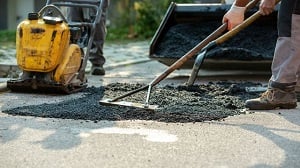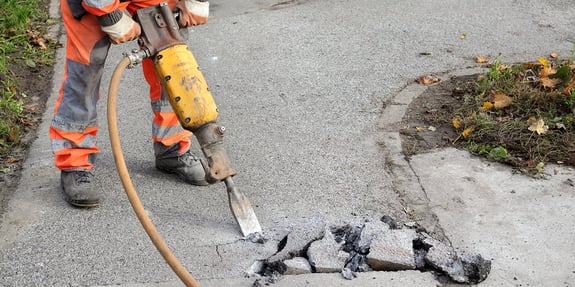Last week we discussed how heat and water damage asphalt. This week let’s discuss how to maintain the asphalt and concrete surfaces.

In the early 1800’s, roads were mostly made of broken stones. To reduce dust and maintenance, builders used hot tar to bond the stones together producing “tarmacadam” pavements. Today, this method is still used as runways for airplanes at airports across the world. In 1870, a Belgian chemist, Edmund DeSmedt, laid the first asphalt pavement in Newark, NJ. His second attempt was 54,000 square yards of sheet asphalt in Washington, DC from Trinidad Lake to Pennsylvania Avenue. (It’s amazing what you can find on Google and Wikipedia!)
The asphalt of today is very different from what was used back then, but there are still some maintenance you should do to extend the life of your asphalt roads and driveways.
- Crack Sealing - This is the most important part of maintain your asphalt and concrete. Alligatoring is a condition easily recognized by a series of cracks grouped together in one area. This type of cracking tells of a subgrade problem. The closer these cracks are together, the shallower the failure. Further apart indicates a deeper failure. When this happens and water gets into the crack and further erodes the asphalt, your only solution is to remove and replace that area. Continued water intrusion will only make the asphalt deteriorate and then it becomes unstable
- Seal Coating – Sealing the roads/driveways can greatly slow down the deterioration process caused by heat, water and normal use. Most roads should be sealed every 3 to 5 years.
- Oil spots – Even roads who only get usage from your community can still have oil spots from vehicles that are not properly maintained (think garbage trucks!). It oil is not cleaned up, over a very long period of time, the asphalt may become soft in those areas. There are ways to clean up oil spots, but unless you have the personnel, on your staff that can take care of those big areas, these are often overlooked. It is good to note, however, that if you, your staff or residents notice these types of oil stains after the garbage trucks have been in your community, call the garbage company immediately and make them come out and review the area and clean it. Clean oil spots using a commercial de-greaser, a broom and water. Just be sure to completely rinse the commercial de-greaser entirely.
- Fuel Spills – Regular unleaded gasoline won’t damage the asphalt immediately but you should try to clean it up as soon as you can. Diesel fuel, on the other hand, is a solvent for asphalt. Contractors actually use diesel fuel to clean their equipment. Diesel fuel will completely dissolve the binders in asphalt and eventually it will turn into a hole.
